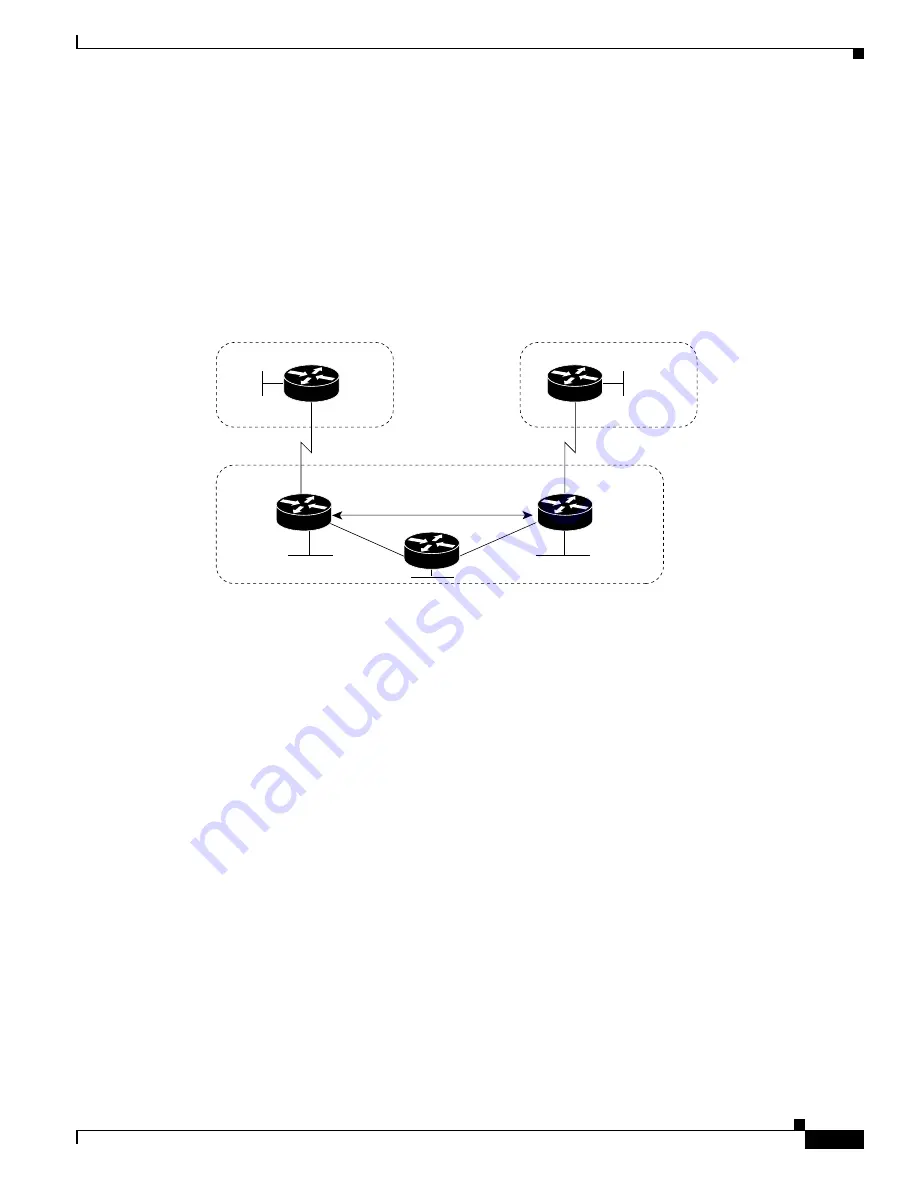
38-45
Cisco Catalyst Blade Switch 3120 for HP Software Configuration Guide
OL-12247-01
Chapter 38 Configuring IP Unicast Routing
Configuring BGP
For details about BGP commands and keywords, see the “IP Routing Protocols” part of the Cisco IOS
IP Command Reference, Volume 2 of 3: Routing Protocols, Release 12.2. For a list of BGP commands
that are visible but not supported by the switch, see
Appendix C, “Unsupported Commands in
Cisco IOS Release 12.2(40)EX.”
Routers that belong to the same autonomous system (AS) and that exchange BGP updates run internal
BGP (IBGP), and routers that belong to different autonomous systems and that exchange BGP updates
run external BGP (EBGP). Most configuration commands are the same for configuring EBGP and IBGP.
The difference is that the routing updates are exchanged either between autonomous systems (EBGP) or
within an AS (IBGP).
Figure 38-5
shows a network that is running both EBGP and IBGP.
Figure 38-5
EBGP, IBGP, and Multiple Autonomous Systems
Before exchanging information with an external AS, BGP ensures that networks within the AS can be
reached by defining internal BGP peering among routers within the AS and by redistributing BGP
routing information to IGPs that run within the AS, such as IGRP and OSPF.
Routers that run a BGP routing process are often referred to as BGP speakers. BGP uses the
Transmission Control Protocol (TCP) as its transport protocol (specifically port 179). Two BGP speakers
that have a TCP connection to each other for exchanging routing information are known as peers or
neighbors. In
Figure 38-5
, Routers A and B are BGP peers, as are Routers B and C and Routers C and
D. The routing information is a series of AS numbers that describe the full path to the destination
network. BGP uses this information to construct a loop-free map of autonomous systems.
The network has these characteristics:
•
Routers A and B are running EBGP, and Routers B and C are running IBGP. Note that the EBGP
peers are directly connected and that the IBGP peers are not. As long as there is an IGP running that
allows the two neighbors to reach one another, IBGP peers do not have to be directly connected.
•
All BGP speakers within an AS must establish a peer relationship with each other. That is, the BGP
speakers within an AS must be fully meshed logically. BGP4 provides two techniques that reduce
the requirement for a logical full mesh: confederations and route reflectors.
•
AS 200 is a transit AS for AS 100 and AS 300—that is, AS 200 is used to transfer packets between
AS 100 and AS 300.
BGP peers initially exchange their full BGP routing tables and then send only incremental updates. BGP
peers also exchange keepalive messages (to ensure that the connection is up) and notification messages
(in response to errors or special conditions).
AS 100
7
4775
AS 200
129.213.1.2
175.220.212.1
129.213.1.1
192.208.10.2
AS 300
EBGP
EBGP
192.208.10.1
175.220.1.2
IBGP
Router B
Router A
Router D
Router C










































